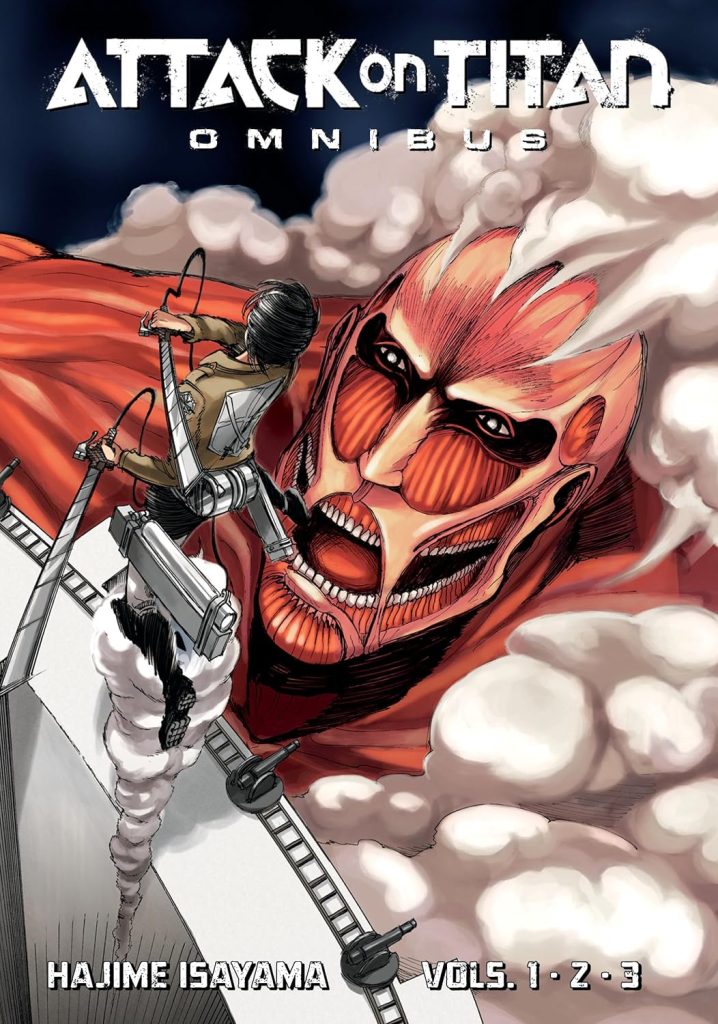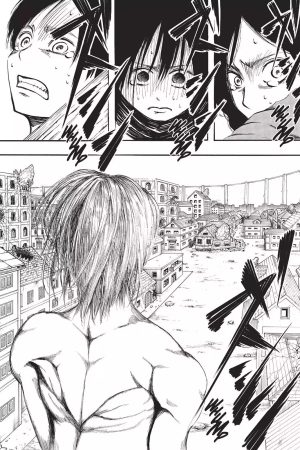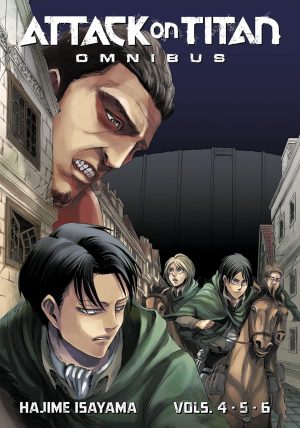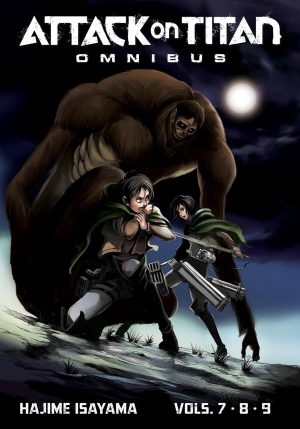Review by Frank Plowright
Two thousand years in the future humanity occupies a large area within three concentric walls over fifty metres high. The walls are to protect people from rampaging giants of assorted heights known as Titans, although as the story begins it’s been a century since the last incursion, and this has resulted in some complacency among citizens despite patrolling outside the walls still being extremely dangerous. Needless to say, we’ve barely been introduced to the main characters and their dreams before a new attack by a Titan so large it can actually see over the wall.
The primary characters over what was originally Attack on Titan 1 are Eren Yeager, son of a research doctor, and Mikasa Ackerman, long a friend, with their backgrounds explored later in the Omnibus. They remain the focus as the series jumps forward five years to them both graduating military academy, Mikasa’s phenomenal military skills ensuring she’s the leading candidate.
As is the case with so many Japanese series, Hajime Isayama uses the opening volumes to set up a situation for the long term, and progresses from there. He’s unusual, though, in not revealing everything about the cast, and surprises are generated by challenging the assumptions of readers as to who people are. A repeated technique is building to a surprise, then dropping a flashback explaining how it’s not so outrageous after all, and Isayama sifts in pages of additional information, such as categorising the giants, or the mechanisms enabling soldiers to shift their weight about in mid-air.
An obvious assumption that present day weapons ought to be able to deal with mindless giants is explained away early. They’re able to regenerate unless attacked at a precise spot on their necks, and this involves combat at close quarters with significantly more powerful beings.
The Omnibus editions are bulkier and a format about a third larger in size than the original volumes, displaying the kinetic rush of Isayama’s art more loosely than the smaller volumes. The art is geared toward telling the story rather than moments of beauty. Eren has a wild stare, and the assorted Titans are goofy looking down to their lack of genitals, but it’s a rare page that catches the attention. Neither does Isayama become bogged down in details. He has a story to tell, and the overall pace is set to maximum until the final third of what was originally Attack on Titan 3. Even then, much of the resulting pause in the action is to speculate about what’s happening going forward.
From relative peace to all out war, much changes over this collection, not least for Eren, the subject of a couple of shocks. Attack on Titan is very readable as an action thriller, but the suspicion is that the animated version is probably even more exciting.
It’s also worth noting the bonus production on the slightly raised figures on the covers. It’s disturbing running your fingers over the Titan’s head here. More in Omnibus 2.



